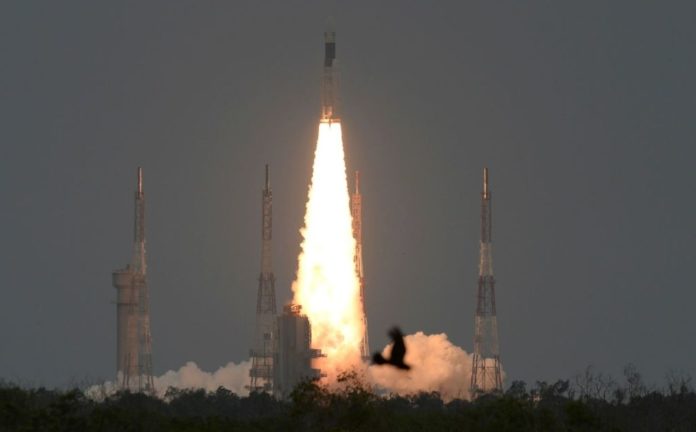Chandrayaan-2 has found the presence of water in multiple sites on the moon, not just at the lunar poles, as India’s previous moon mission, Chandrayaan-1, observed.
ISRO said data from their imaging infrared spectrometer (IIRS) on Chandrayaan-2, the mission launched in 2019, revealed “widespread lunar hydration and unambiguous detection of OH (hydroxyl groups, considered water signatures) and H2O (water) on the moon between 29 and 62 degrees North.”
“We have quantified lunar surface hydration and found total water levels to vary up to 800ppm at multiple locations, even beyond the polar regions,” said the lead author, Prakash Chauhan.
His team included scientists from the Space Applications Centre in Ahmedabad, from the UR Rao Satellite Centre in Bengaluru, and ISRO headquarters.
Onboard Chandrayaan1, the Moon Mineralogy Mapper (M3) imaging spectrometer observed hydration in the polar regions and isolated cases in the equatorial areas.
The difference between the spectral imaging data from the two missions is explained by improved spectral imaging range in Chandrayaan-2.
On Chandrayaan-1, the profile of observed hydration signatures could not be determined because of the limited spectral coverage of M3 (only up to 3μm), so uncertainties about thermal correction could not be accounted for.
Accurate detection of lunar hydration, H2O and OH, in the 3μm wave band, required thermal correction to sunlight reflected from the moon due to high daytime temperatures. Without correction, additional thermal signals were found in the reflectance spectra beyond 2.5μm. This made discrimination between OH, H2O and water-ice detection difficult in the data from Chandrayaan-1.
But, Chandrayaan-2 fixed this. Developed at ISRO’s Space Applications Centre, the new generation of imaging spectrometer onboard Chandrayaan2 extended the spectral range from 0.8μm to 5.0μm, most suitable to profile lunar hydration in detail.
This spectrometer mapped the lunar surface at a spatial resolution of ~80m in 256 colours from a circular orbit of 100 km. The early results reported lunar hydration at 3μm band after thermal correction of lunar spectral reflectance between 2μm to 5μm.
“For the first time, this new orbital data allowed us to fully understand the 3μm absorption associated with OH, H2O and water ice at relatively higher spatial resolution”, the authors said. “Hydration absorption was observed at all latitudes and surface types and absorption depth showed distinct variability associated with mineralogy, surface temperature and latitude”.
Hydration was observed in brighter sunlit highland rocks in higher latitudes compared to that in the dark basaltic rocks. While the 2.8μm absorption feature, indicating presence of OH, was more prominent in the basaltic plains, the 3μm absorption feature indicating H2O was mostly present at higher latitudes and highland regions.
“The findings reported by Chauhan and team clearly show abundance of water on the moon’s surface,” said Ramesh Singh, a professor at Chapman University and an expert in optical and microwave remote sensing.
References
1. Chauhan, P. et al. Unambiguous detection of OH and H2O on the Moon from Chandrayaan-2 Imaging Infrared Spectrometer reflectance data using 3μm hydration feature. Curr. Sci. (2021) doi: 10.18520/cs/v121/i3/391-401
Photo credit should read ARUN SANKAR/AFP via Getty Images
